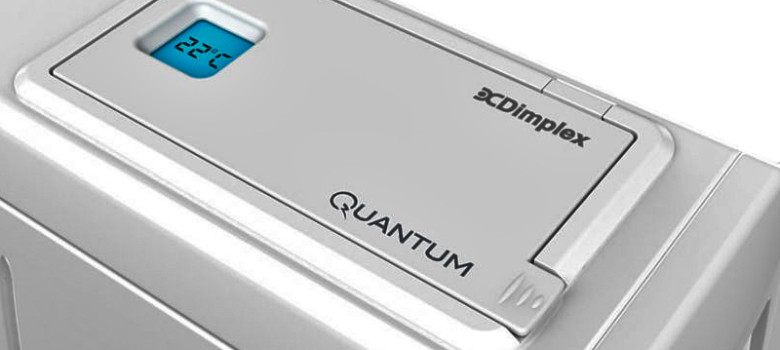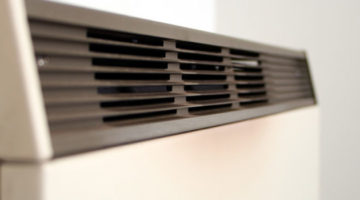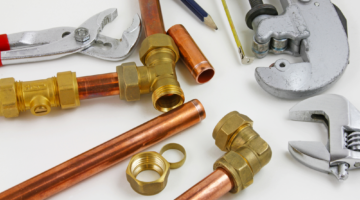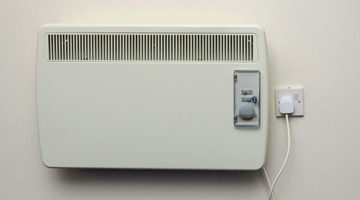
What are storage heaters?
Storage heaters are a form of electric convection heating. They work by heating the volume of air in a property which operates on a dual tariff electricity meter such as Economy 7 or Economy 10. It uses electricity supplied by the grid during periods of low tariff, to heat up storage elements within the heater. These storage elements, or storage bricks, then release the required amount of heat when required during times when electricity has increased to the on-peak rates. They are designed to be a cheap heating system because they use the off-peak tariff, not because they use less electricity. In reality, due to their relative inefficiency through leaking heat, they actually require more electricity than standard electric convector heaters.
What are the benefits of storage heaters?
As storage heaters run off electricity, they do not require extensive plumbing or pipework, just a simple set of wires. This means that they are fairly cheap to install and are, in most cases, maintenance-free. As they use off-peak tariffs, they have traditionally been cheaper to run than other electric convection heating methods. While old forms of storage heater may not be that efficient, new technology has made them a more tempting option. Storage heaters can also be used in conjunction with renewable systems such as solar PV and wind turbines, and be charged for free whenever a surplus amount of electricity is being generated.
What are the problems involved with storage heaters?
One of the main problems is leakage. It is impossible for a storage heater to store 100% of the heat generated. Therefore, they are required to store more heat than is actually required for the next day. This means that although electric convection heating is 100% efficient, storage heaters need to use more electricity than standard convectors. Another problem comes with time and temperature control. As the electricity is stored for the next day’s heating requirement, there is little movement if it’s exceptionally cold and not enough heat has been stored or it’s too hot and too much has been stored.
>>> The cost of heating your home with gas vs electricity <<<

Storage heaters have varying controls depending on the style and age. These include automatic and manual input controls, power switches and thermostatic controls. New-age storage heaters even have access to weather conditions – as well as intelligent controls – and can alter the input depending on the predicted temperature within the property the next day. All storage heaters have the option of a boost setting, which just turns the storage heater into a standard electric convector on the peak tariff.
How do storage heaters compare with other heating systems?
Gas central heating – cheaper to install but more expensive to run due to the cost of electricity being higher than gas.
Heat pumps – cheaper to install but more expensive to run due to heat pumps producing around 3-4 units of heat for every unit of electricity.
Infrared heating panels – similar install costs but higher running costs.
Oil boilers – cheaper to install but more expensive to run due to the cost of electricity being higher than heating oil.
LPG boilers – cheaper to install but more expensive to run due to the cost of electricity being higher than LPG.
Benefits of storage heaters
- Allows you to take advantage of the cheaper off-peak tariff electricity during the night.
- Cheaper to install than complete central heating systems.
- Little maintenance required.
Limitations of storage heaters
- Unavoidable heating overnight may result in wasted energy.
- It is difficult to deal with sudden changes of weather. Preset amounts of input don’t allow for alterations.
- Some companies lock customers into their tariffs by installing non-standard meters. Switching companies for your supplier then becomes prohibitively expensive.
- Tend to be bulky.
- The size also dictates how much ‘charge’ the heater can take, so although you can get smaller heaters, they may not be able to provide all the heat you need.
- Complicated controls.
Costs of storage heaters
- Fan-assisted storage heaters cost around £500 + install.
- Dimplex Quantum storage heaters cost around £700 + install.
Installing storage heaters
Need new storage heaters? We have scoured the country for the best tradespeople, so that we can make sure we only recommend those we really trust.
If you would like us to find you a local installer for storage heaters, just fill in the form below and we will be in touch shortly!












I HAVE JUST MOVED INTO A RENTED FLAT WITH STORAGE HEATERS, I REALLY DO NOT KNOW HW TO USE THEM BUT i AM TRYING. CAN YOU LET ME KNOW IF I PUT THE HEATERS ON AT NIGHT ON HIGH, CAN IN TURN DOWN THE HEAT DURING THE DAY AND THEN TURN THEM UP AT NIGHT, AS ITS COLDER AT NIGHT.
So Valerie, the storage heaters charge at night and then release the heat during the day, so you need to put input (i.e. electricity going into the system) during the night on high and then output needs to be set for when you actually want your home to warm up.
Ive got Stiebell Electron heaters installed but one is not working, can I get these repaired? I can’t find details of tradesmen who do this
I do not have a clue what setting to put these heaters on, the hall seems lovely ad warm, but in the loung I am cold, there are no instruction manuals.
? FISCHER HEATING? comments please
Storage heaters are cost effective.
kk hun
You will also notice that there are multiple models available on the market. This is great if you are trying to find what is the most efficient portable heater because some models will be more efficient than others.
I an told that LOT 20 regulation means that my present storage heater, connected to Economy 7, cannot be replaced and I would have to have a heater connected to the standard electrical supply. Is this true?